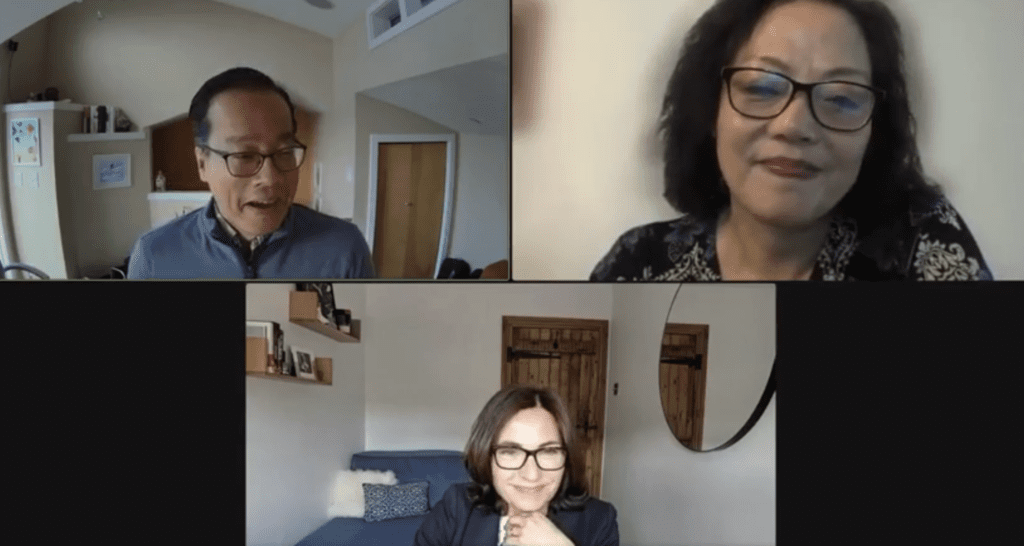Where were we? Oh yes; a quick-fire summary of a panel discussion with Intel and Microsoft from Private Networks Forum in May, which presents, in random order, five technology drivers and five business drivers (or other business concerns) for the rollout of 5G in enterprise venues. We are seven drivers down already (see here; covered in four bullet points, also listed below), with three to go; all the remaining observations from the session are about the business drivers to switch to private 5G.
1 | BRIDGE TO THE CLOUD (OR: NO TECHNOLOGY / SUPPLIER IS AN ISLAND)
2 | FIVE TECH DRIVERS – COVERAGE, CONTROL, CONNECTIVITY (#1, #2, #3)
3 | FIVE TECH DRIVERS – MOBILITY, RELIABILITY (#4, #5)
4 | BLUEPRINTS FOR (USE CASES FOR) BUSINESS PROBLEMS
The session at Private Networks Forum (available online) went under the headline Mastering Each Vertical via a New Partnership Ecosystem, and sought ostensibly to talk about the private-5G supply discipline as a team sport. It was chaired by Viet Nguyen, vice president of technology at 5G Americas; the responses are from Caroline Chan, in charge of Intel’s 5G infrastructure division, and Jaione Pagazaurtundua, in charge of Microsoft’s private MEC portfolio.

5 | INTEGRATION WITH LEGACY OT SYSTEMS
The elephant in the room: how to integrate private 5G, plus new IoT-based digital sensor systems, into decades-old operational technology (OT) equipment, and also into existing information technology (IT) divisions. Pagazaurtundua at Microsoft made the important, though obvious, point that most deployments are in ‘brownfield’ venues and not in brand-new ‘greenfield’ sites – despite a flurry of interest from new-build factories with the trend for near-shoring production.
But Pagazaurtundua commented: “We’re not seeing greenfield; they are normally OT [setups that] already have systems in place that they want to migrate onto 5G… So it’s not a greenfield-type-of deployment… The other [point] is… how to integrate OT and IT teams. You’ve got IT people thinking the 5G side doesn’t really understand their own businesses. So they need to work together more closely to be able to find where 5G can really help them. But it needs to start from a business need.”
Which was, perhaps, the key message from the whole session – that discussion with the enterprise starts, always, with its business problem. And the process is a slow one, added Pagazaurtundua, which should probably not be rushed. She said: “In brownfield scenarios, you need to think about how to enable the journey. Enterprises will not just deploy everything straight away… They might have some apps running on Wi-Fi; they might want to run proofs with LTE.”
She added:” You need to take into account what’s already there. If they plan a big rip-and-replace, then it is never going to happen. It will be too expensive. You need to take them step-by-step.”
6 | KNOWLEDGE TRUST – THE TEAM SPORT OF IOT
This is, of course, the new sales mantra in IoT, which the whole industry – but particularly its new ringmasters, like Microsoft, pulling the strings like strange gods in the cloud – are prone to preach about. But it also makes sense. The IoT discipline – which dwarfs private networks at the edge – is a team sport, where all the parties assemble like in a Hollywood buddy movie to go mob-handed on an unlikely mission; in this case, their target is the enterprise gold in them digital hills.
But the point, as raised by Chan and Pagazaurtundua, is that it is too damn difficult for one party to go it alone – at least with the tools out-of-the-box. Chan cherry-picked a team of Industry 4.0 pros: a cloud hyperscaler, a system integrator (global or regional), a (band of) software developer(s), a test and measurement contingent, maybe a mobile operator. Their task, together, is to make a complex task more simple, and keep it laser-focused on the enterprise case.
Pagazaurtundua put the focus on the software applications, invariably hosted in the cloud (or the edge-cloud), where the likes of Microsoft plies its trade – with the same mission to simplify. She said: “You need specialist applications for industry, and you need to make it easy for developers that don’t understand 5G… Part of that is making it simple for them to consume 5G services, and part is to make it easier to integrate them with consistent tooling, more automation, more orchestration.”
Microsoft is the captain in this sport, the message invariably goes. The value of a central cloud engine is to coordinate and orchestrate Industry 4.0 applications (and core networks, in some cases) as they scale across multiple enterprise venues, and also to unite a software ecosystem around them. Pagazaurtundua, perhaps over-egging this captaincy role, remarked: “That is where we know the cloud can help bring together that ecosystem, [and] create the platform that makes it easier to access the applications and to consume the 5G services.”
7 | OPERATORS – IN OR OUT OF THIS CIRCLE OF TRUST?
Which leads us, with a skip and a jump, to the greatest question of our time*: will mobile network operators find a new home, and new hope, in the enterprise space, as this technology they helped to create is fitted into the wider global economy? Pagazaurtundua and Chan were polite, but their points were keen ones. Pagazaurtundua picked up the question first. “I’ll start with that one, if that’s okay,” she said. “They have knowledge and expertise… [but] their role will depend on the market.
“There is definitely a journey for those kinds of telcos to [be]… trusted partners that can really help with the wider transformation of enterprises. They already have the expertise… to manage and support those private networks, and they own spectrum, which enterprises need.” Chan at Intel agreed, effectively; that they’re good at stuff, but not necessarily, and not always, the stuff that enterprises want. There is work for them to do, she said.
“They’re really excellent at the B2C business… [but] now it is more of a B2B business. But they have the spectrum, and they know how to run a telco network. Which are things we must not neglect. To scale a private network, we 100 percent need operators as a very active part of the ecosystem. They tend to already have trust with enterprises… The question is how they transfer all of that into the IT and OT worlds… [so] it is not about network performance, but about solving business problems.”
And we are back at the start.
* Not the greatest question of our time – unless maybe you are a mobile operator with a heavy infrastructure investment portfolio and flat-to-shrinking margins.

